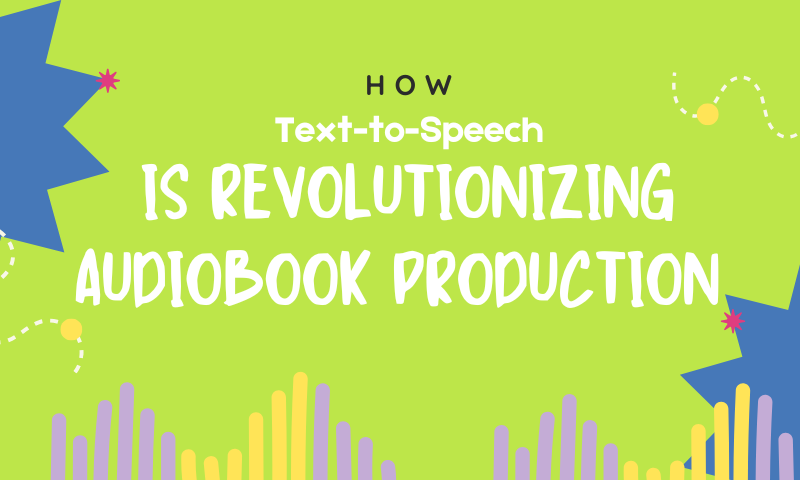How Text-to-Speech is Revolutionizing Audiobook Production

For centuries, the written word was the primary vessel for stories. Then came the spoken word, first around campfires and later through radio dramas. Today, we are in the midst of a new renaissance: the age of the audiobook. This isn't just a shift from print to audio; it's a fundamental transformation in how we access and experience narratives.
Technology is the great enabler, allowing stories to be consumed anywhere, anytime—during a commute, while cooking, or at the gym—turning passive moments into immersive adventures.

Why Audiobooks Matter More Than Ever
In our fast-paced, multitasking world, audiobooks offer a unique solution. They cater to the desire for continuous learning and entertainment without demanding our undivided visual attention.
But beyond convenience, there's a deeper magic. The human voice carries nuance, emotion, and character that text alone cannot. A skilled narrator can breathe life into a story, forging a powerful emotional connection between the listener and the narrative. This combination of practicality and profound emotional resonance is why the audiobook market is exploding.

Understanding Text-to-Speech (TTS) Technology
What is Text-to-Speech?
Text-to-Speech (TTS) is a form of assistive technology that converts written text into spoken audio. At its core, a TTS system has two key components:
The Front-End (Natural Language Processing - NLP): This is where the text is prepared. The system breaks down the text, converts abbreviations like "Dr." into "Doctor," understands punctuation to determine pauses, and uses phonetic analysis to determine how to pronounce words correctly.
The Back-End (Speech Synthesis): This is where the sound is generated. The processed text is converted into phonemes (the smallest sound units), which are then strung together and output through a synthesized voice.

The Science Behind Synthetic Voices
Gone are the days of monotonous, robotic computer voices. Modern TTS is powered by deep learning and neural networks. These AI models are trained on thousands of hours of human speech.
They don't just play pre-recorded sounds; they learn the intricate patterns of human prosody—the rhythm, stress, and intonation of speech. This allows them to generate entirely new speech that sounds astonishingly natural.

From Robotic to Realistic
The journey from robotic to realistic is a story of relentless innovation. Early TTS relied on concatenative synthesis, stitching together tiny fragments of recorded speech, often resulting in disjointed and unnatural flow. The breakthrough came with neural TTS.
By modeling the human vocal tract, these systems can generate fluid, expressive speech with appropriate pauses, emphasis, and even emotional undertones, making the synthetic voice nearly indistinguishable from a human one in many contexts.

Impact on Audiobook Production
Faster Production Times
Traditional audiobook production is a marathon. It involves booking a studio, a director, and a narrator, followed by days or weeks of recording, and then extensive editing and mastering. This process can take months. TTS compresses this timeline into hours or days.
A finished manuscript can be converted into a ready-to-publish audiobook almost instantly, eliminating scheduling bottlenecks and dramatically accelerating time-to-market.

Cost Efficiency and Accessibility
Producing a professional human-narrated audiobook can cost thousands of dollars per finished hour. This high barrier to entry locked many authors, especially independents, out of the market.
TTS slashes these costs by over 90%, removing the need for studios, engineers, and high narrator fees. This democratizes audiobook creation, allowing every writer to offer their stories in an audio format, regardless of budget.

Scalability for Publishers
TTS is a game-changer for major publishers with vast backlists of titles that are not audiobooks. They can now cost-effectively convert thousands of titles into audio, vastly expanding their catalogues. Furthermore, TTS enables effortless multilingual expansion.
A single book can be narrated in dozens of languages with a click, unlocking global audiences without the logistical nightmare of hiring a different narrator for each language.

Enhancing Listener Experience
Customizable Listening Voices
What if you prefer a deeper voice or a faster pace? With TTS, the listener is in control. Many systems allow for the personalization of tone, pitch, speaking rate, and even accent, creating a tailored listening experience that caters to individual preferences and needs, such as those of listeners with dyslexia or visual impairments.
Consistency Across Audiobooks
Human narrators can have off days. Their voices might be tired, leading to inconsistencies in tone or pacing across recording sessions. An AI narrator is indefatigable. It delivers perfect consistency from the first word to the last, maintaining the same energy, character voices, and narrative style throughout the entire book and series.

Emotional Resonance Through AI
The latest TTS systems are capable of emotional speech synthesis. By adding tags like <happy>, <sad>, or <sarcastic> into the text, or through AI that contextually understands emotional subtext, synthetic voices can now convey mood, emphasis, and subtlety. This moves the narration beyond simple reading into the realm of performance, making it engaging and immersive.
Innovations Driving the Revolution
Adaptive AI Narration
The next generation of TTS is context-aware. It can dynamically adjust its pacing during an action scene, adopt a softer tone for a romantic moment, or clearly differentiate between narration and character dialogue, creating a more dynamic and responsive listening experience.
Integration with Audiobook Platforms
TTS is becoming seamlessly integrated into major audiobook and streaming platforms. This enhances discoverability and accessibility, allowing users to instantly generate audio for articles, blogs, or even books that haven't been professionally narrated, all within the same app they use for music and podcasts.

Multilingual Capabilities
Advanced TTS now pairs with machine translation to offer automatic translation and localization. In one automated process, a book can be translated from English to Spanish and narrated by a native-sounding Spanish AI voice, truly breaking down language barriers for global audiences.
Conclusion
Text-to-Speech is far more than a convenience tool; it is redefining the very fabric of storytelling. It is dismantling economic and logistical barriers, giving every author a voice and every story a chance to be heard. While challenges remain, the trajectory is clear.
We are glimpsing a future where the vast library of human literature is accessible to everyone, in any language, in a voice of their choosing. TTS isn't replacing storytelling; it's unleashing it on a scale never imagined.


